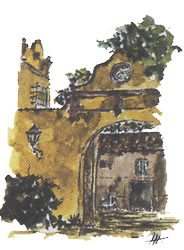ASTM D4783-01 (2021). Standard Test Method for Resistance of Adhesive Preparations in Container to Attack by Bacteria, Yeast and Fungi).
Test accredited in our Laboratory by ENAC (Spanish National Accreditation Entity).
This test method is used to assess the resistance of liquid adhesive products to microbial attack in packaging by testing adhesive samples against cultures of bacteria, yeasts or fungi, and to analyse the adhesive preparations´ ability to restore or regain sterility.
This test method is used to demonstrate whether an adhesive product is sufficiently protected with biocide to resist attack by microorganisms during storage. The adhesive can be tested against isolated strains of bacteria, yeasts and fungi recommended by the standard, mixed inocula of these species, or microorganisms isolated from contaminated adhesives.
Adhesive preparations must be tested against four inocula over four consecutive weeks. In each test, adhesive samples are taken after 4, 24, 48, 72 hours and 7 days of inoculation, which are plated on suitable media to detect microbial growth and incubated for 7 days. If growth is observed in any of the challenge tests on the plate on day 7, the test is terminated and the adhesive will be reported as not resistant to the microorganisms used in the test. The highest level of biocidal resistance occurs when an adhesive product regains sterility after 4 hours of inoculation with the test microorganism(s) and maintains it for 7 days and four challenge tests. Adhesives that regain sterility after 24 hours of challenge and maintain it for 7 days during 2 to 4 challenge tests are considered to have adequate antimicrobial protection.
Ideally, tests should be performed with a negative control, an adhesive sample of the same chemical composition, but without biocide, and a positive control, which inhibits the growth of microorganisms. The positive control will ideally have the same composition as the adhesive to be tested, but with a higher concentration of biocide with a preservative effect. Alternatively, another product of known efficacy can be used.
The client must indicate the microorganisms that the adhesive product must be challenged with. The ASTM Standard suggests the use of bacteria: Pseudomonas fluorescens, Pseudomonas aeruginosa, Bacillus subtilis and Proteus vulgaris; yeasts: Candida tropicalis, Kluyveromyces fragilis, Candida pseudotropicalis; and fungi: Aspergillus niger, Aspergillus flavus and Penicillium pinophilum.

